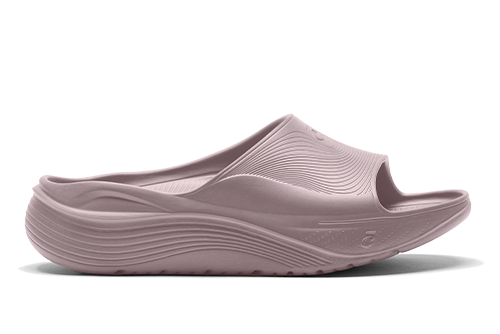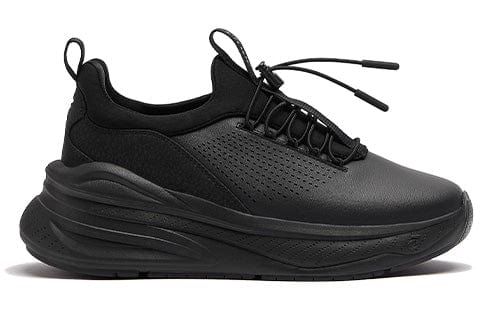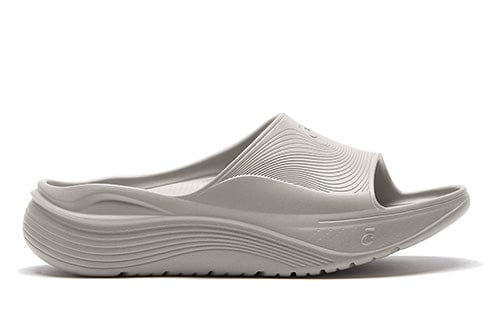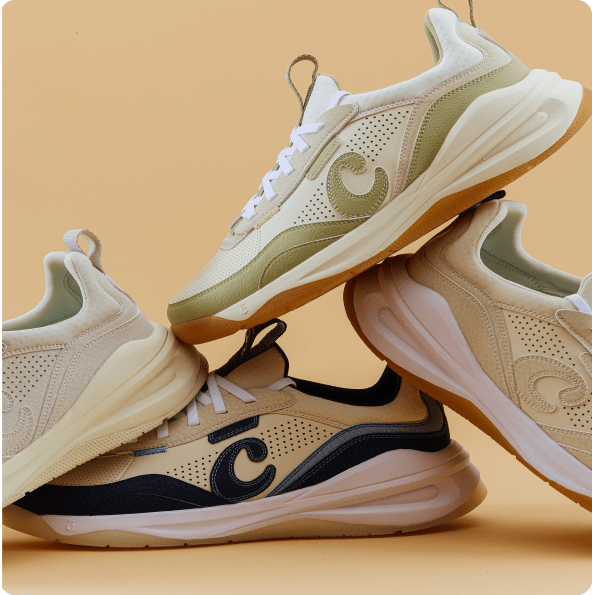Exploring the Importance of Stretching
Stretching is more than just a prelude to exercise; it's a vital practice for maintaining overall health and well-being. Whether you're standing all day, working a desk job, or leading an active lifestyle, incorporating stretching into your daily routine can offer significant benefits. In this article, we'll explore why stretching is important and how it can positively impact your life, especially for those who are always on their feet.
Benefits of Stretching
Improves Flexibility and Range of Motion
One of the primary benefits of stretching is that it improves flexibility and range of motion. For individuals who stand all day, such as healthcare professionals, retail workers, or anyone in physically demanding jobs, maintaining flexibility is crucial. Regular stretching helps keep muscles and joints limber, reducing stiffness and increasing mobility. This makes daily activities easier and enhances performance in physical tasks and exercises.
Imagine you’re reaching for something on a high shelf or bending down to pick up an item – these movements become smoother and less strenuous when your muscles are flexible. Good flexibility also helps alleviate discomfort associated with tight muscles and joints, providing a greater sense of well-being.
Helps Prevent Injuries
Another critical benefit of stretching is its role in injury prevention. Stretching warms up the muscles and joints, preparing them for activity. This is particularly important before engaging in physical exercises or sports. Dynamic stretching, which involves active movements that stretch the muscles, can increase blood flow and muscle temperature, making them more pliable and less prone to injuries.
For instance, athletes often engage in dynamic stretching routines before games or practices to ensure their muscles are ready for the intense activity. This type of stretching can include leg swings, arm circles, or walking lunges. On the other hand, static stretching, where you hold a stretch for a period, is beneficial after physical activity to help relax and lengthen the muscles, aiding in recovery and reducing muscle soreness.
How Stretching Affects Overall Health
Improves Posture and Reduces Muscle Tension
Good posture is essential for maintaining a healthy body, and stretching plays a vital role in achieving and sustaining it. Many people struggle with poor posture due to prolonged sitting or standing in the same position. This can lead to muscle imbalances and tension, particularly in the neck, shoulders, and back.
Stretching helps to correct these imbalances by lengthening tight muscles and strengthening weak ones. For example, stretching the chest muscles and strengthening the upper back muscles can help pull the shoulders back, promoting a more upright posture. This also reduces the risk of developing chronic pain and discomfort associated with poor posture.
Enhances Blood Circulation and Reduces Stress
Stretching is important not only for the muscles but also for the circulatory system. When you stretch, you increase blood flow to the muscles, which helps deliver essential nutrients and oxygen. This improved circulation can enhance muscle recovery and reduce muscle soreness after physical activity. Additionally, better blood flow can help lower blood pressure and improve overall cardiovascular health.
Stretching is also an excellent way to reduce stress. The act of stretching helps to release tension held in the muscles, promoting a sense of relaxation. Incorporating deep breathing into your stretching routine can further enhance this effect, helping to calm the mind and reduce anxiety.
Importance of Stretching Feet
Enhances Foot Mobility and Flexibility
Our feet are the foundation of our bodies, yet they are often neglected when it comes to stretching. Stretching the feet is crucial for maintaining mobility and flexibility. This is especially important for people who stand all day, as their feet bear the brunt of their body weight and are susceptible to becoming tight and stiff.
Understanding how to stretch the arch of your foot and doing simple foot stretches, such as toe raises and ankle circles, can help improve flexibility and range of motion. These stretches can prevent issues like tight calf muscles and Achilles tendonitis, which are common in people who are on their feet for extended periods.
Prevents Foot Conditions Like Plantar Fasciitis and Arch Pain
Regularly stretching the feet can also prevent painful conditions like plantar fasciitis and arch pain. Plantar fasciitis, for instance, is a common issue that causes sharp pain in the heel and arch of the foot. Knowing how to stretch the bottom of your foot, or the plantar fascia, can help alleviate this pain and prevent it from occurring in the first place.
Additionally, incorporating supportive footwear, such as our sneakers for men and women, can complement your stretching routine. Clove sneakers are designed with working professionals in mind, providing the necessary support and comfort to keep your feet comfortable throughout the day. The combination of regular stretching and proper footwear can make a significant difference in preventing and managing foot pain.
Incorporating Stretching Into Your Routine
5 Daily Stretches: Simple Exercises to Improve Overall Flexibility
Incorporating stretching into your daily routine doesn’t have to be time-consuming or complex. Knowing how to stretch your feet, legs, and the rest of your body isn’t too complicated a task, as many simple stretches can improve your overall flexibility and take just a few minutes to do:
- Hamstring Stretch
Sit on the ground with one leg extended and the other bent inward so that the sole of your foot rests against your inner thigh. Reach towards your toes, keeping your back straight. Hold for 20-30 seconds and switch sides.
- Quadriceps Stretch
Stand on one leg, pull your other foot towards your buttocks, holding it with your hand. Keep your knees close together and hold for 20-30 seconds. Switch sides.
- Shoulder Stretch
Bring one arm across your body and hold it with the opposite arm, pulling it gently towards your chest. Hold for 20-30 seconds and switch arms.
- Calf Stretch
Stand facing a wall with one foot forward and the other foot back. Keep your back leg straight and your heel on the ground as you lean forward. Hold for 20-30 seconds and switch legs.
- Cat-Cow Stretch
Get on your hands and knees. Arch your back (cow position) and then round it (cat position), holding each position for a few seconds. Repeat for 10-15 repetitions.
Stretching for Specific Conditions
Certain conditions can benefit significantly from targeted stretching routines. Here are a few examples:
- Plantar Fasciitis: Stretching the bottom of the foot and the calf muscles can help alleviate pain from plantar fasciitis. Try rolling a tennis ball under your foot and performing calf stretches.
- Tight Hip Flexors: If you spend a lot of time sitting, your hip flexors can become tight. Stretch them with lunges and hip flexor stretches.
- Shoulder Pain: Shoulder stretches and strengthening exercises can help reduce shoulder pain. Incorporate shoulder rolls, cross-body stretches, and wall angels into your routine.
- Lower Back Pain: Stretching the lower back and hamstrings can help alleviate lower back pain. Try the cat-cow stretch and hamstring stretches.
Creating a Stretching Routine
To create an effective stretching routine, consider the following tips:
- Set Aside Time
Dedicate at least 10-15 minutes each day to stretching. This can be done in the morning, after a workout, or before bed.
- Focus on Problem Areas
Identify areas of your body that feel tight or prone to discomfort and focus on stretching those areas.
- Incorporate Variety
Include a mix of dynamic and static stretches to address different needs and keep your routine interesting.
- Listen to Your Body
Stretch to the point of mild discomfort, not pain. If a stretch feels too intense, ease off slightly.
- Stay Consistent
Consistency is key to seeing the benefits of stretching. Make it a regular part of your daily routine.
From ensuring you can do things comfortably to improving your posture and blood flow, these are indeed many reasons to make stretching a habit. By incorporating a regular stretching routine into your daily life and paying special attention to your feet, you can enjoy a more comfortable, active, and healthy lifestyle. Top this off with supportive footwear from Clove and accessories like compression socks, and you can go about work, play, or any other activity with more comfort and less worry.
Sources:
- Medical News Today. 9 benefits of stretching. https://www.medicalnewstoday.com/articles/benefits-of-stretching
- StretchCoach. 12 Benefits of Stretching – Backed by Science. https://stretchcoach.com/articles/how-does-stretching-prevent-injury/
- Houston Methodist Learning Medicine. 5 Benefits of Stretching (Plus, the Do's & Don'ts of Stretching Correctly). https://www.houstonmethodist.org/blog/articles/2022/jul/5-benefits-of-stretching-plus-the-dos-donts-of-stretching-correctly/
- Alamitos – Seal Beach Podiatry Group. The Benefits of Stretching Your Feet. https://alamitos-sealbeach-podiatry.com/the-benefits-of-stretching-your-feet/


























